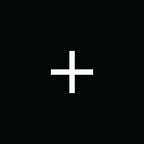Design trends: Neumorphic design
In the early years of the modern user interfaces, we used to have skeuomorphic designs; it was a design mimicking its use case. For example, buttons were glossy, and the trashcan icon resembled deleting, and so on.
PART 2: Neumorphic design: Dark mode
After the reign of the skeuomorphic was over, we had minimalistic design; the depth effect from skeuomorphic design disappeared, and we replaced it with a minimal, flat design. The big software companies released their guidelines, such as Google’s material design.
The neumorphism design
The neumorphic effect is a combination of the current famous flat UI and the old skeuomorphic principles! The components have a dark box-shadow on the bottom and a light box-shadow on top; the combination of both creates the effect of the elements pushing themselves through your display.
Get creative
You could get creative in your web designs and simulate an actual button push. This effect is achievable by removing the box-shadow on click! Of course, do not forget to add an indicator to signify a button press, add a colored status bar, or fill the entire component.
Don’t feel pressured to follow the skeuomorphic design guideline of mimicking a use case for each component! If you think it might look nice to have a lot of information catered on a card, go for it.
Thank you for making it to the end of this post! Did you like this post? Clap those hands!
